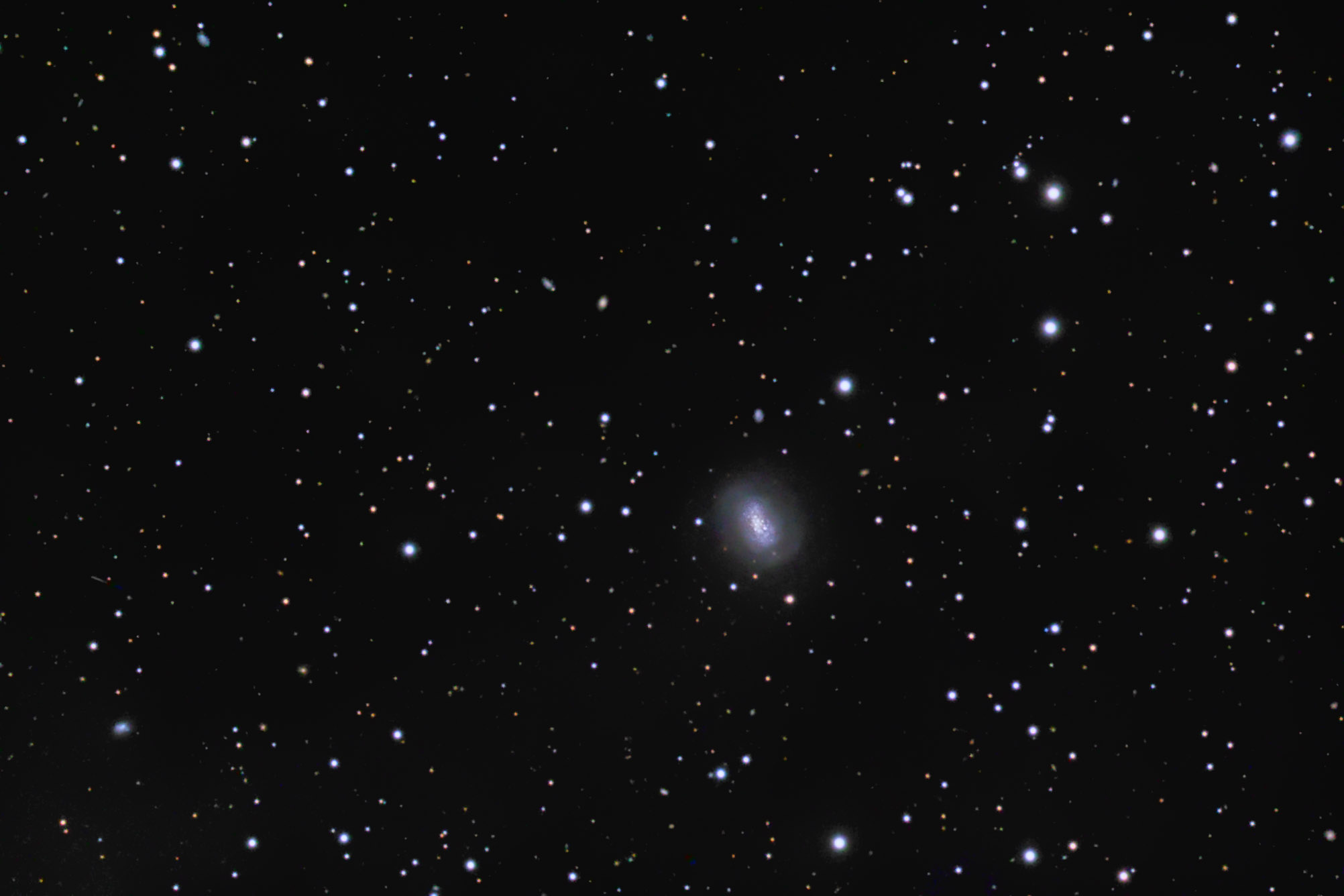Object name: ARP235 ARP 235/NGC 14 is an irregular peculiar galaxy in Pegasus. Arp classified it under: "Galaxies (not classifiable as S or E); Appearance of fission. He also noted; "Faint outer oval and resolution into stars". Was he referring to all the star clusters in the core of this galaxy? I see nothing else in his photo with the 200" scope that would fit. http://nedwww.ipac.caltech.edu/level5/Arp/Figures/big_arp235.jpeg. Film grain is very obvious in the image but I see no sign of stars. This galaxy is nearby at only about 24 million light years. Therefore some earth based scopes should be able to resolve stars in it using today's detectors. In fact, the star clusters look almost like stars in the Sloan Deep Sky Survey but they are far too bright to be individual stars. It was discovered by William Herschel on September 18, 1786. It's not in either Herschel 400 observing programs.
Toward the lower left corner is a small blue galaxy with an even bluer blob within the halo just right of its core. It too is about 25 million light-years away per its redshift. It is KUG 0007+154. The small blue blob carries the designation of SDSS J000952.87+154406.9 and is listed as a separate galaxy. Both have about the same redshift. Makes me think it is more likely a star-forming region in HUG 0007+154. To be this small at this distance KUG 0007+154 would have to be a very small dwarf galaxy with the possible companion being a subdwarf.
The galaxy above ARP 235 is SDSS J000846.00+155142.2 at 530 million light years. It is very blue and seems to have an off-center core. Yet I see nothing around it that could have caused this.
To the west (right) of Arp 235, a short distance (in my image), is a small red galaxy. This is SDSS J000834.99+155011.8 at 2.07 billion light-years. It has been severely reddened by all the intergalactic dust and gas its light passed through to get to us.
At about 10 o'clock from Arp 235 is a very blue "star" at about the same distance from Arp 235 as the above galaxy. Two stars to its lower left point about at it, the lower of the two is somewhat orange in color. This is the quasar SDSS J000856.79+155045.7 at 9.0 billion light years, the most distant object in the image of which I'm aware.
To the lower left above KUG 0007+154 is the trail of asteroid (93258) 2000 SX165. At a distance of about 18 light minutes, it is the closest object to us in the image. That means the quasar is about 600 trillion times further away than the asteroid! Now that's a large depth of field!
Arp's image: http://ned.ipac.caltech.edu/level5/Arp/Figures/big_arp235.jpeg
14" LX200R @ f/10, L=4x10' RGB=2x10'x3, STL-11000XM, Paramount ME Related Designation(s):2MASS J00084639+1548563, 2MASX J00084642+1548559, ARP 235, ARP235, ASK 147361.0, CGCG 0006.2+1532, CGCG 456-034, HIPASS J0008+15, IRAS F00061+1532, KUG 0006+155, MCG +02-01-021, MCG +03-01-026, NGC 0014, NSA 126277, PGC 000647, SDSS J000846.41+154856.5, UGC 00075, USGC U006 NED05, UZC J000846.2+154857, VV 080, [TCW2007] 002, | | 